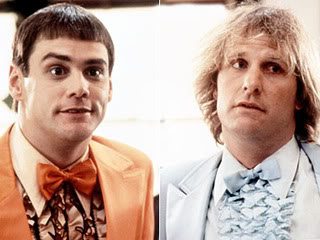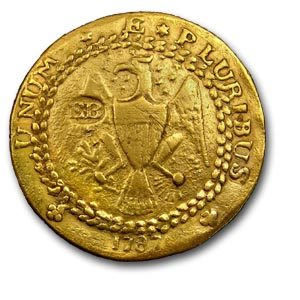
The decision by BHP Billiton, one of the world?s largest producers of copper, to postpone its planned $20 billion expansion of its Olympic Dam mine is sounding alarms about the near term state of the global economy. It is telling us that China is slowing faster than we thought, that demand for base metals is shriveling, and that we are anything but close to exiting out current market malaise. This is not good for risk assets anywhere.
The news comes on the heels of a company announcement that earnings would fall from $21.7 billion to $17.1 billion this year. The weakest demand from China in a decade was a major factor. So was the Fukushima nuclear disaster, which dropped prices for uranium, another product of the Olympic Dam mine. Piling on the headaches was a strong Australian dollar, which escalated capital costs. BHP CEO, Marius Kloppers, has said that there will be no new expansion of the company?s capacity approved before mid-2013.
Olympic Dam is the world?s fourth largest copper source and the largest uranium supply. The upgrade was going to involve digging a massive open pit in South Australia that would generate 750,000 tonnes of copper and 19,000 tonnes of uranium a year. Almost the entire output was slated to be shipped to the Middle Kingdom. When Chinese real estate flipped from a ?BUY? to a ?SELL? last year, the days for this expansion were numbered.
I have been following BHP for 40 years, and a number of family members have worked there over the years. So I know it well, and can tell you that their pay and benefits are great. I have used it as a de facto leading indicator and call option on the future of the world economy. When the share price delivers a prolonged multiyear downturn as it has recently done, it is a warning to be cautious and limit your risk.
Hey, I Saw That Parking Place First!
With oil (USO) getting ready to take a run at $100 a barrel once again, the first thing I do when I get up every morning is to curse the oil companies as the blood sucking scourges of modern civilization. I then fall down on my knees and thank goodness that we have the oil companies.
You?ve got to love ExxonMobile (XOM). The world?s largest company announced an unbelievable $127.3 billion in Q2 revenues, generating a gob smacking $15.9 billion in net profits. This year, (XOM) will spend $9.3 billion on exploration and capital spending. Some of their wells easily cost $100 million each. This is why petroleum engineers are getting $100,000 straight out of college, while English and political science majors are going straight on to food stamps.
I recommend (XOM) and other oil majors as part of any long term portfolio. No matter what anyone says, the price of oil goes up, in my lifetime, from $3 a barrel up to $149. The reasons for the ascent keep growing, from the entry of China into the global trading system, to the rapid growth of the middle class in emerging nations. They?re just not making the stuff anymore, and we can?t wait around for more dinosaurs to get squashed.
Oil companies aren?t in the oil speculation business. As soon as a new supply comes on stream, they hedge off their risk through the futures markets or through long term supply contracts. You can find the prices they hedge at in the back of any annual report.
When oil made its big run a few years ago, I discovered to my amazement that (XOM) had already sold most of their supplies in the $20 range. However, oil companies do make huge killings on what is already in the pipeline.
Working in the oil patch a decade ago pioneering the ?fracking? process for natural gas, I got to know many people in the industry. I found them to be insular, God fearing people not afraid of hard work. Perhaps this is because the black gold they are pursuing can blow up and kill them at any time. They are also great with numbers, which is why the oil majors are the best managed companies in the world.
They are also huge gamblers. I swallow hard when I see the way these guys throw around billions in capital, keeping in mind past disasters, like Dome Petroleum, the Alaskan oil spill, Piper Alpha, and more recently, the ill-fated Macondo well in the Gulf of Mexico. But one failure does not slow them down an iota. The ?wildcatting? origins made this a faith based industry from day one, when praying was the principle determinant of where wells were sunk.
Unfortunately, the oil companies are too good at their job of supplying us with a steady and reliable source of energy. They have one of the oldest and most powerful lobbies in Washington, and as a result, the tax code is riddled with favorite treatment of the oil industry. While social security and Medicare are on the chopping block, the industry basks in the glow of $55 billion a year in tax subsidies.
When I first got into the oil business and sat down with a Houston CPA, the tax breaks were so legion that I couldn?t understand why anyone was not in the oil racket. Every wonder why we have had three presidents from Texas over the last 50 years, and looked at a possible fourth last year?
Three words explain it all: the oil depletion allowance, whereby investors can write off the entire cost of a new well in the first year, while the income is spread over the life of the well. This also explains why deep water exploration in the Gulf is far less regulated than California hair dressers.
No surprise then that the industry has emerged in the cross hairs of the debt ceiling negotiations, under the ?loopholes? category. Not only do the country?s most profitable companies pay almost nothing in taxes, they are one of the largest users of private jets.
It is an old Washington nostrum that when things start heading south on the domestic front, you beat up the oil companies. It?s the industry that everyone loves to hate. Cut off the gasoline supply to an environmentalist, and he will be the one who screams the loudest. This has generated recurring cycles of accusatory congressional investigations, windfall profits taxes, and punitive regulations, the most recent flavor we are now seeing.
But imagine what the world would look like if Exxon and its cohorts were German, Saudi, or heaven forbid, Chinese. I bet we wouldn?t have as much oil as we do today, and it wouldn?t be as cheap. Hate them if you will, but at least these are our oil companies. Try jamming a lump of coal into the gas tank of your Prius and tell me what happens.
Love Them, Hate Them or Both?
Global Trading Dispatch?s Trade Alert Service posted a new all-time high yesterday, clocking a 52.8% return since inception. The 2012 YTD return is now at 12.62%. That takes the average annualized return up to 30.2%, ranking it among the top performing hedge funds in the world. Those happy subscribers who bought my service on May 23 have seen 19 out of 20 trade recommendations turn profitable, reaping a 16.71% gain from my advice.
I really nailed the top of the market on April 2, piling on hefty short positions in the S&P 500 (SPY) and the Russell 2000 (IWM) within a week. Predicting that the conflagration in Europe would get worse, my heavy short in the Euro (FXE), (EUO) was a total home run. I took in opportunistic profits trading the Japanese yen (FXY), (YCS) and the Treasury bond market (TLT) from the short side. I was then able to lock in these profits by covering all of my shorts within 60 seconds of the May 28 market bottom.
In June, I caught almost the entire move up with a portfolio packed with ?RISK ON? trades. I picked up Apple (AAPL) at $530 for a rapid $50 gain. I seized the once in a lifetime opportunity to buy JP Morgan (JPM) at a 40% discount to book value, picking up shares at $31, correctly analyzing that the ?London Whale? problem was confined and solvable.
My long position in Walt Disney (DIS) performed like the park?s ?Trip to the Moon? ride. While Hewlett Packard (HPQ) fell a disappointing 5% on me, I was able to add 140 basis points to my performance through time decay on an options position. The latest performance pop came from the recent surge in gold (GLD) and Apple, my two largest positions.
My satisfaction in all of this comes from the knowledge that thousands of followers are making money in the markets that never would otherwise. I am protecting them from getting ripped off by the sharks on Wall Street with their conflicted and indifferent research.
I am expanding their understanding of not just financial markets, but the world at large. And I am doing this during some of the most difficult trading conditions in history. Only 11% of hedge funds have managed to beat the S&P 500 since January 1.
The roster of winning closed trades is below. This doesn?t include the seven unrealized profitable positions still in my portfolio:
Global Trading Dispatch, my highly innovative and successful trade-mentoring program, earned a net return for readers of 40.17% in 2011. The service includes my Trade Alert Service, daily newsletter, real-time trading portfolio, an enormous trading idea database, and live biweekly strategy webinars. To subscribe, please go to my website at www.madhedgefundtrader.com, find the ?Global Trading Dispatch? box on the right, and click on the lime green ?SUBSCRIBE NOW? button.
Trade Alert Service Since Inception
Thanks Again Steve
Much of the fury in this morning?s nearly 60 point ?melt up? opening in the Dow was generated by hedge funds panicking to cover shorts. Convinced of the imminent collapse of Europe, the impotence of governments, and the death spiral in sovereign bonds, many managers were running a maximum short position at the opening, and for the umpteenth time, were forced to cover at a loss. Meet the new dumb money: hedge funds.
When I first started on Wall Street in the seventies, you heard a lot about the ?dumb money.? This was a referral to the low end retail investors who bought the research, hook-line-and-sinker, loyally subscribed to every IPO, religiously bought every top, and sold every bottom.
Needless to say, such clients didn?t survive very long, and retail stock brokerage evolved into a volume business, endlessly seeking to replace outgoing suckers with new ones. When one asked ?Where are the customers? yachts,? everyone in the industry new the grim answer.
Since the popping of the dot-com boom in 2000, the individual investor has finally started to smarten up. They bailed en masse from equities, seeking to plow their fortunes into real estate, which everyone knew never went down. Since 2007, the exit from equities has accelerated.
Although I don?t have the hard data to back it, I bet the average individual investor is outperforming the average hedge fund in 2012 by a large margin. With such heavy weightings of bonds, including the municipal, corporate, and government flavors, how could it be otherwise? While the current yields are miniscule, the capital gains have to be humongous this year, with Treasury yields plunging from 4% to 1.38% in the last two years alone.
This takes me back to the Golden Age of hedge funds during the 1980?s. For a start, you could count the number of active funds on your fingers and toes, and we all knew each other. The usual suspects included the owl like Soros, the bombastic Robertson, steely cool Tudor-Jones, the nefarious Bacon, the complicated Steinhart, of course, myself, and a handful of others.
The traditional Wall Street establishment viewed us as outlaws, and believed that if the trades we were doing weren?t illegal, they should be, like short selling. Investigations and audits were a daily fact of life. It wasn?t easy being green. I believe that Steinhart was under investigation during his entire 40 year career, but the Feds never brought a case.
It was worth it, because in those days, if you did copious research and engaged in enough out of the box thinking, you could bring in enormous profits with almost no risk. I used to call these ?free money? trades. To be taken seriously as a manager by the small community of hedge fund investors you had to earn 40% a year or you weren?t worth the perceived risk. Annual gains of 100% were not unheard of.
Let me give you an example. In 1989, you could buy a leveraged warrant on a Japanese stock near parity, for $100, that gave you the right to own $500 worth of stock. You bought the warrant and sold short the underlying stock. Overnight yen yields then were at 6%, so 500% X 6% = 30% a year, your risk free return. Most Japanese stock dividends were near zero then, so the cost of borrowing was almost nothing. If the stock then fell, you also made big money on your short stock position. This was not a bad portfolio to have in 1990, when the Nikkei stock index plunged from ?39,000 to ?20,000 in three months, and some individual shares dropped by 80%.
Trades like this were possible because only a smaller number of mathematicians and computer geeks, like me, were on the hunt, and collectively, we amounted to no more than a flea on an elephant?s back. Today, there are over 10,000 hedge funds managing $2.2 trillion, accounting for anywhere from 50% to 70% of the daily volume.
Many of the strategies now can only be executed by multimillion dollar mainframe computers collocated next to the stock exchange floor. Winning or losing trades are often determined by the speed of light. And as the numbers have expanded exponentially from dozens to hundreds of thousands, the quality of the players has gone down dramatically, with copycats and ?wanabees? crowding the field.
The problem is that hedge funds are no longer peripheral to the market. They are the market, and therein lies the headache. How are you supposed to outperform the market when it means beating yourself? As a result, hedge fund managers have replaced the individual as the new ?dumb money, buying tops and selling bottoms, only to cover at a loss, as we witnessed today.
The big, momentum breakout never happens anymore. This is seen in hedge fund returns that have been declining for a decade. The average hedge fund return this year is a scant 2.2%, compared to 13% for the S&P 500. Fewer than 11% of hedge fund managers our outperforming the index, or a simple index fund. Make 10% now and you are a hero, especially if you are a big fund. That hardly justifies the 2%/20% fee structure that is still common in the industry.
When markets disintegrate into a few big hedge funds slugging it out against each other, no one makes any money. I saw this happen in Tokyo in the 1990?s, when hedge funds took over the bulk of trading. Volumes shrank to a shadow of their former selves, and today, Japan has fallen so far off the radar that no one cares what goes on there. Japanese equity warrants ceased trading by 1994.
How does this end? We have already seen the outcome; that investors flee markets run by hedge funds and migrate to those where they have less of an impact. That explains the meteoric rise of trading volumes of other assets classes, like bonds, foreign exchange, gold, silver, and other hard assets.
Hedge funds are left on their own to play in the mud of the equity markets as they may. This will continue until hedge fund investors start departing in large numbers and taking their capital with them. The December redemption notices show this is already underway. Just ask John Paulson, who has one of his funds down 20% year to date, again.
How About 2% and 20%?
While in Zermatt, Switzerland recently, I took the opportunity to undergo my annual physical. Over the years, I have discovered that American doctors are so paranoid about getting sued that I can never get a straight answer about anything, so I do all of my physicals abroad.
I like visiting Dr. Christian because he is cut from the same cloth as I. He is a small wiry guy without an ounce of fat, and keeps his hair tied behind in a ponytail. Nothing like treating your patients through example. He has served as the team doctor on several Himalayan expeditions, reaching the incredible altitude of 25,000 feet without oxygen. He includes Mount McKinley and Aconcagua on his resume.
He gave me the good news: I had blood pressure of 110/70 and a resting pulse rate of 50. This was at an altitude of 5,500 feet, which always elevates one?s blood pressure. The bottom line was that I had the heart of a teenaged Olympic athlete. He told me that whatever I was doing, to keep on doing it. I said that would be strapping on a 60 pound backpack and climbing the 1,500 foot mountain in my backyard every night after work. He answered that would explain everything.
Dr. Christian usually allocates extra time for patients my age to deliver them bad news. That was unnecessary in my case. So we killed time trading notes on our favorite climbs.
I also grilled him on the state of the Swiss medical system. He complained that it was going downhill, but was nowhere near as bad as in the US, where his brother practices medicine. Everyone here gets medical care after paying a small premium. His liability insurance was only $3,000 a year, compared to $100,000 in the US. The only malpractice suits in Switzerland are brought by Americans, and they always lose.
The main reason medical costs were so low is that the people of Switzerland were so much healthier. Walking around the streets here, most people look like they are triathletes. And they do this despite smoking like chimneys. Maybe they are related?
Life expectancy in Switzerland is 82.2 compared to only 78.2 in the US. And the quality of life at old age is much better. Obesity is rampant at home, but rare in the Alps. Diabetes is unusual in Switzerland, but epidemic in the US. Over 400,000 Americans undergo kidney dialysis in the US, while the treatment is almost unheard of in Europe. This is why the US is spending 12% of GDP on health care, on its way to 17%, while Switzerland is flat lining at 8%, with an older population.
I thanked Dr. Christian for his advice. The total bill? $200. I headed to the local pharmacy to get a one year supply of my anti-cholesterol drug, which I can buy 90% cheaper than at home. That allows me to keep my total health care costs under $500 a year.
I then celebrated my good fortune by stepping across the street for a bratwurst and a beer, which my American doctor once banned me from. There, I planned my coming assault on the Matterhorn.
?
?Meet My Health Care Plan
I?ll never forgot when my friend, Don Kagin, one of the world?s top dealers in rare coins, walked into the gym one day and announced that he made $1 million that morning.? I inquired ?How is that, pray tell??
He told me that he was an investor and technical consultant to a venture hoping to discover the long lost USS Central America, which sunk in a storm off the Atlantic Coast in 1857, heavily laden with gold from the California mines (click here for the full story at http://www.shipofgoldinfo.com/ ). He just received an excited call that the wreck had been found in deep water off the US east coast.
I learned the other day that Don had scored another bonanza in the rare coins business. He had sold his 1787 Brasher Doubloon for $7.4 million. The price was slightly short of the $7.6 million that a 1933 American $20 gold eagle sold for in 2002.
The Brasher $15 doubloon has long been considered the rarest coin in the United States. Ephraim Brasher, a New York City neighbor of George Washington, was hired to mint the first dollar denominated coins issued by the new republic.
Treasury secretary Alexander Hamilton was so impressed with his work that he appointed Brasher as the official American assayer. The coin is now so famous that it is featured in a Raymond Chandler novel where the tough private detective, Phillip Marlowe, attempts to recover the stolen coin. The book was made into a 1947 movie, ?The Brasher Doubloon,? starring George Montgomery.
This is not the first time that Don has had a profitable experience with this numismatic treasure. He originally bought it in 1989 for under $1 million, and has made several round trips since then. The real mystery is who bought it last? Don wouldn?t say, only hinting that it was a big New York hedge fund manager who adores the barbarous relic. He hopes the coin will eventually be placed in a public museum. Who says the rich aren?t getting richer?
?Oh, how I despise the yen, let me count the ways.? I?m sure Shakespeare would have come up with a line of iambic pentameter similar to this if he were a foreign exchange trader. I firmly believe that a short position in the yen should be at the core of any hedged portfolio for the next decade, but so far every time I have dipped my toe in the water, it has been chopped off by a samurai sword.
But now the 200 day moving average has been decisively broken, suggesting that the death of the yen may finally be at hand.
I was heartened once again this week when friends of mine in Tokyo told me that the loose money crowd at the Bank of Japan was slowly gaining in ascendance. Japanese exporters are getting hammered by the strong yen, accelerating the hollowing out of Japanese manufacturing, further adding to the country?s real unemployment rate. It has become a major political problem for the Noda administration.
To remind you why you hate all investments Japanese, I?ll refresh your memory with this short list of the problems bedeviling the country:
* With the world?s structurally weakest major economy, Japan is certain to be the last country to raise interest rates.
*As tsunami reconstruction money runs out, the economy is juddering to a halt. This week, the Ministry of Finance announced that Q2 GDP plunged from a 5.5% annual rate to only 1.4%.
* This is inciting big hedge funds to borrow yen and sell it to finance longs in every other corner of the financial markets.
* Japan has the world?s worst demographic outlook that assures its problems will only get worse. They?re not making Japanese any more.
* The sovereign debt crisis in Europe is prompting investors to scan the horizon for the next troubled country. With gross debt exceeding 240% of GDP, or 120% when you net out inter-agency crossholdings, Japan is at the top of the hit list.
* The Japanese long bond market, with a yield of 0.86%, is a disaster waiting to happen.
* You have two willing co-conspirators in this trade, the Ministry of Finance and the Bank of Japan, who will move Mount Fuji, if they must, to get the yen down and bail out the country?s beleaguered exporters.
When the big turn inevitably comes, we?re going to ?185, then? ?100, ?120, and eventually ?150 to the US dollar. That could take the price of the leveraged short yen ETF (YCS), which last traded at $42.73, to over $100.? But it might take a few years to get there. The fact that the Japanese government has come on my side with this trade is not any great comfort. Many intervention attempts have so far been able to weaken the Japanese currency only for a few nanoseconds.
If you think this is extreme, let me remind you that when I first went to Japan in the early seventies, the yen was trading at ?305, and had just been revalued from the Peace Treaty Dodge line rate of ?360. To me the ?79.20 I see on my screen today is unbelievable, and unsustainable.
Noted hedge fund manager Kyle Bass says he is already in this trade in size. All he needs for it to work is for Japan to run out of domestic savers essential to buy the government?s domestic yen bond issues, who have pitifully had sub 1% yields forced upon them for the past 17 years. Then the yen, the bond market, and the stock market all collapse like a house of cards. Kyle says that could happen at any time.
It?s All Over For the Yen
?The good news is that we have moved away from heart attack mode in the European Community,? said Gillian Tett, US managing editor of the Financial Times.
For the second time in four years, the Republican Party has blown a presidential election through the choice of a running mate. What little chance the GOP had in winning the election has gone up in smoke with the selection of Wisconsin congressman Paul Ryan to join the ticket. Think of him as a Sarah Palin with pants.
Of course, there was great celebration by the Tea Party wing that sees Ryan as a standard bearer. And don?t get me wrong. With an economics background, Ryan brings far more intellectual weight to the game than the former governor of Alaska.
The problem is that Ryan doesn?t bring a single new vote to Romney. He had a lock on the Tea Party vote, no matter who the vice presidential candidate is. It?s not like they were going to vote for Obama because they didn?t like his pick.
What Ryan does do is dash any hopes the Republicans had of capturing moderates, independents, and undecideds. Romney can?t win without these. As I write this, Obama is already winning every battleground state, except Virginia, which is a dead heat.
Since Ryan has been the poster boy for the replacement of Medicare with a voucher system, he brings this crucial issue for seniors to the forefront. Most people have already figured out that this would freeze benefits at current levels while medical care inflation continues at a 10%-20% annual rate unabated. This is why it never made it into law, even when the Republicans controlled all branches of government. You could not imagine an issue better designed to alienate voters, and the Ryan pick focuses a giant, great spotlight on it.
Just take a look at the three states with the highest percentage of seniors, who are understandably gun shy over the matter. Those are Florida, with 29 electoral votes, Pennsylvania with 20 votes, and Iowa with 6. A Republican loss of the first two alone is enough to decisively swing the election to Obama. If you live outside of Wisconsin and are unaware of the Ryan Medicare plan, just wait. The videos of him pushing granny in a wheelchair over a cliff are already running online.
At least Romney and Obama finally agree on something. They both wanted Ryan as the vice presidential candidate. One Democratic strategist said they are now going to gather up what campaign money they have left, buy a margarita machine, and party until November.
What all of this does mean is that traders and investors can now build a second Obama term into their strategic and asset allocation assumptions. It means that when Ben Bernanke?s term is up in 18 months, he will either be reappointed or replaced with a clone with an identical philosophy. That means QE3, QE4, and QE5 until the economy returns to a more robust 3%-4% growth rate, which for demographic reasons is probably ten years off.
This means that financial markets could continue to bounce along in narrow ranges for four more years. Every bout of weakness will be met with more Fed action, or the implied threat of it. But the economy never reaches the escape velocity for the markets to bust out to the upside either. We all end up dying of boredom instead of Armageddon.
Romney and Ryan?s antipathy towards Bernanke and the Fed are well known. So a Republican win would have brought quantitative easing to a screeching halt, and possibly a quick unwind of the central bank?s massive $2.8 trillion balance. Such a policy would be highly recessionary. Remember, no Bernanke means no Bernanke put. You could halve asset prices everywhere pretty quickly in such a scenario.
This is all frustrating for me because I much prefer crashes to slow grinds. I can make a bundle in a good market meltdown, and outperforming conventional long only competitors by a huge margin is a piece of cake. Basically, crises are good for my business. Give me a good 500 point down day in the Dow, and traffic on my website soars as the desperate seek guidance from wherever they can find it.
I know this piece will probably ignite a firestorm of controversy. These political pieces usually do. However, in election years an accurate call on outcomes can be crucial to your performance. If you have something to say, send me data, not opinions. I live in the world of facts and hard numbers, not beliefs or religions. I?m always looking for someone to prove me wrong so I can readjust my global view, but I need evidence to do this, not a new chant from a Yaqui Indian.
By the way, if you want to watch a fascinating insider account of the Palin vice presidential run, watch the movie ?Game Changer?, which is now out on HBO. It really gives you an inside look at how campaigns are run, warts and all. I saw several of these during my days in the White House Press Corps three decades ago, and what goes on behind the green curtains is truly amazing, if not unbelievable. For you, it might be an eye opener.
Is This a BUY Signal?
During my recent trip to Europe, I made another startling discovery about the woeful state of America?s 19th century health care system. I needed to get refills on my prescription drugs when I was in Zermatt, so I stopped by the local pharmacy and placed an order. This was for three different a typical guy my age takes for blood pressure, cholesterol, and arthritis.
Since my insurance isn?t valid in Switzerland, I was expecting to get gouged on the bill. I was amazed when I was told it was only $20 for a month?s supply. The tab? in the US without insurance was $200. Even the copay with my insurance came to $60. Why are identical drugs manufactured by the same company, Roche, ten times more expensive at home than they are in Switzerland? Even when they are invented in the US?
I asked the pharmacist if she had more of the same pills at these prices. She said sure, that I could buy all I want with a doctor?s approval. So that night, I emailed my doctor at home for new prescriptions. I then marched back in the next day and bought a one year supply for everything. Total cost: $360, and presumably, Roche is making at least a 20% profit margin at these prices.
I managed to garner an additional savings from the 40% depreciation suffered by the Swiss franc against the greenback from the 2011 high. The full ticket price for this at home would be $2,400, and the copays alone would total $720.
The savings were enough to take a substantial bite out of the cost of my trip to Europe. US customs didn?t care when I brought them back in. It has to be the multiple 100% mark ups by middlemen along the way, plus some extra cash that somehow gets into the pocket of Blue Cross to pay for the CEO?s private jets that is causing this disparity. So if you plan to visit Europe, bring your doctor?s prescriptions with you. The savings will amount to a bundle.




























